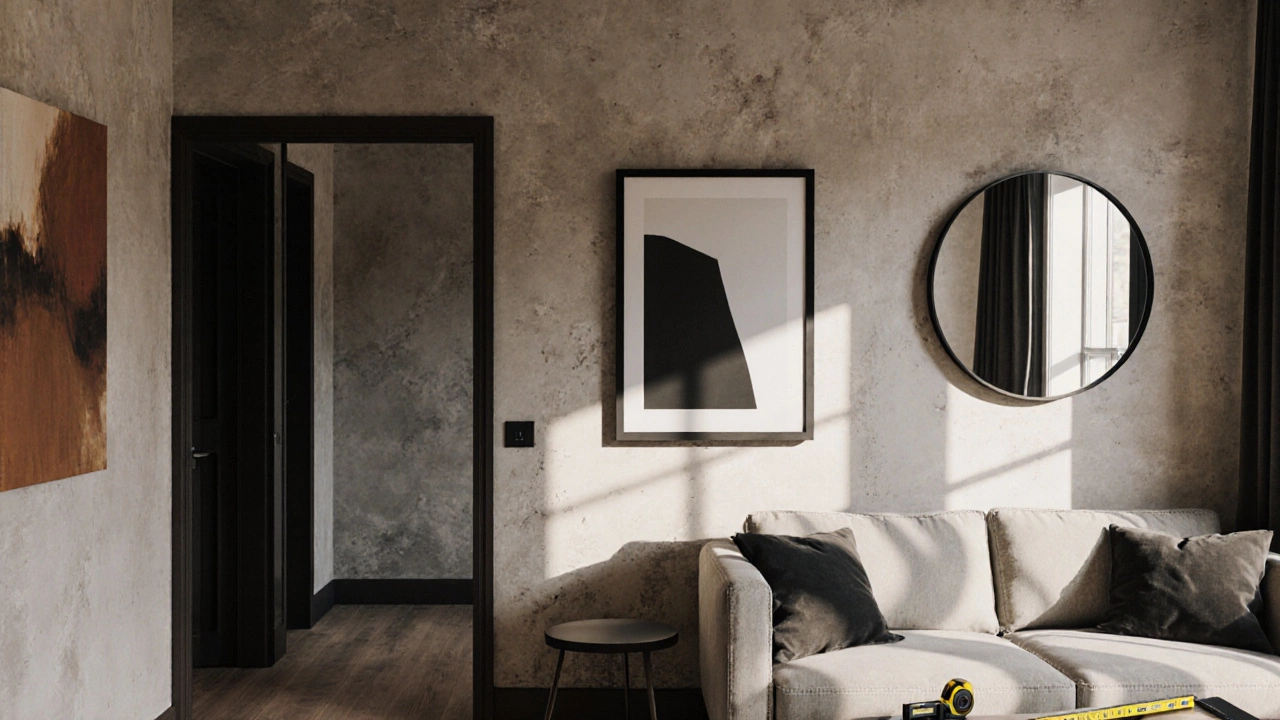Gallery Wall Ideas: Fresh Ways to Style Your Space
When planning gallery wall ideas, a curated arrangement of art, photos, and decorative pieces that turns a blank wall into a visual focal point. Also known as wall collages, it blends personal taste with design principles to create impact. Gallery wall ideas work for any room, from living rooms to home offices, and they often hinge on the right mix of filler art, small decorative objects that fill gaps and add texture and thoughtful background choices.
Why Filler Art Matters in a Gallery Wall
Filler art, pieces like abstract prints, botanical sketches, or framed fabric swatches that occupy empty spaces isn’t just filler—it guides the eye and balances the composition. When you place a large statement piece, you’ll notice the surrounding smaller works prevent the wall from feeling lopsided. For example, a 24×36 inch landscape can be anchored by a row of 12×12 inch prints, creating rhythm without overwhelming the room. This approach follows the semantic triple: gallery wall ideas encompass filler art, and filler art influences interior design. By selecting filler pieces that echo the color palette of your main artwork, you reinforce cohesion and keep the wall from looking cluttered.
Choosing filler art also involves material considerations. Wood block prints add warmth, while metallic frames inject shine. Look for items that match the texture of your existing décor—if you have a matte velvet sofa, a soft‑paper art print will complement it better than a glossy photo. This relationship—filler art requires appropriate material selection—helps you keep the wall harmonious.
Beyond visual balance, filler art can serve functional roles. A small calendar, a vintage map, or a set of inspirational quotes can add utility without sacrificing style. Pairing these with larger artworks keeps the wall lively and personalized.
When you decide on filler art, think about scale, color harmony, and the story you want to tell. These choices will shape how the whole gallery wall interacts with the room’s lighting and furniture.
Another key decision is the backdrop. Should you paint the wall a solid hue, or opt for wallpaper? Both options have distinct advantages that affect how your gallery wall reads.
Wallpaper, wall coverings ranging from subtle textures to bold patterns that add depth to a surface can act as a neutral canvas or become part of the display itself. Textured wallpaper—like grasscloth or linen—softens glare and gives the wall a tactile feel, making the art pop. On the other hand, a simple, light‑colored paint—think soft gray or warm off‑white—keeps focus on the frames and reduces visual competition. This leads to the triple: gallery wall ideas require wallpaper or paint, and paint provides a versatile background for any art style.
If you choose wallpaper, look for patterns that won’t clash with your frames. A muted geometric design works well behind a collection of colorful prints, while a solid‑color vinyl offers a clean slate for a more eclectic mix. When you go with paint, consider a matte finish; it reduces reflections and lets the artwork shine.
Both wallpaper and paint influence the overall mood of the room. Dark, dramatic wallpaper can create a gallery‑like ambience, perfect for showcasing moody photography or abstract pieces. Lighter paint opens the space, making it feel airy—ideal for casual, family‑friendly walls.
Beyond the wall itself, the surrounding interior design context matters. Interior design, the broader discipline that arranges space, color, and furniture to achieve a cohesive look determines how the gallery wall integrates with furniture, lighting, and floor coverings. A modern living room with sleek sofas and metallic coffee tables pairs nicely with a gallery wall featuring monochrome prints and thin black frames. Conversely, a cozy cottage might favor wooden frames, soft fabrics, and a warm color palette on the wall.
Lighting is another crucial factor. Picture lights or directional spotlights highlight focal pieces, while ambient room lighting ensures the wall remains readable from different angles. If you have pendant lighting, position it to create shadows that add depth to the arrangement.
Home decor trends also feed into gallery wall ideas. The growing popularity of filler art as a way to soften larger compositions reflects a desire for layered, lived‑in spaces rather than sterile, single‑piece displays. This trend aligns with the semantic link: filler art supports a lived‑in look, encouraging viewers to see the wall as an evolving collage.
Putting it all together, a successful gallery wall balances three core entities: the main artwork, filler art, and the wall’s background—whether paint or wallpaper. By understanding how each piece interacts, you can design a wall that feels intentional, vibrant, and reflective of your personal style.
Below you’ll find a curated selection of articles that break down each step in detail. From choosing the right filler art to mastering wallpaper patterns and lighting tricks, the posts will give you actionable insights to build a gallery wall that truly stands out.
Wall Decor Rules: A Practical Guide to Hanging Art & Styling Your Space
- Gavin Whitaker
- |
- |
- 0
Learn the essential wall decor rules to hang art, mirrors, shelves, and murals with confidence. Step‑by‑step tips, tools, and common pitfalls covered.
View more